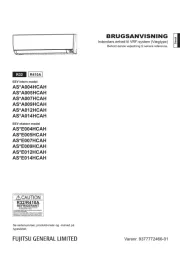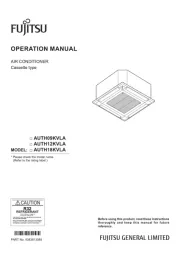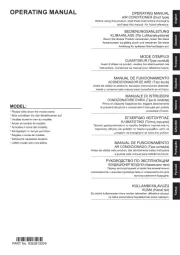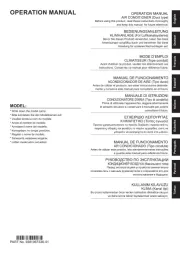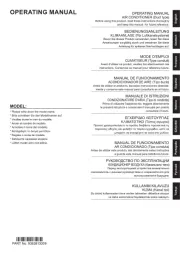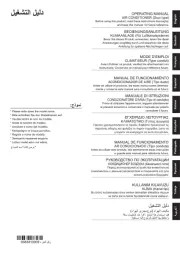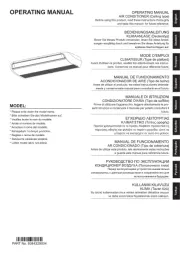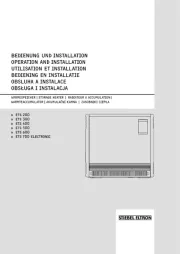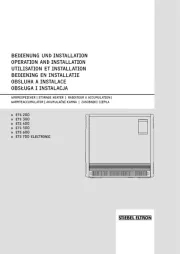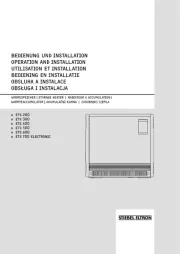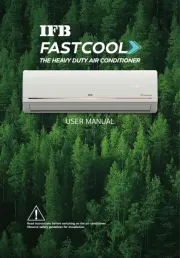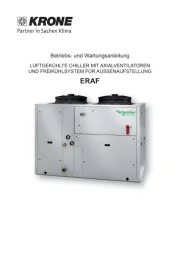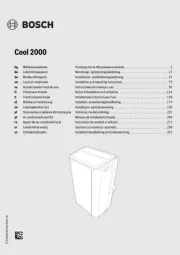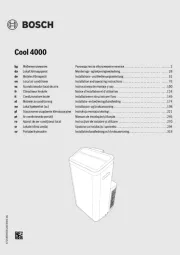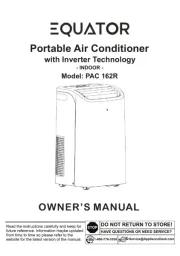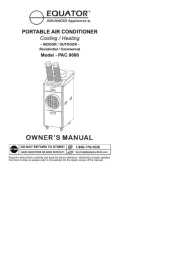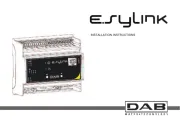En-1
WARNING
• Installation of this product must be done by experienced service technicians or
professional installers only in accordance with this manual. Installation by nonprofes-
sional or improper installation of the product may cause serious accidents such as
injury, water leakage, electric shock, or fi re. If the product is installed in disregard of
the instructions in this manual, it will void the manufacturer’s warranty.
• To avoid getting an electric shock, never touch the electrical components soon
after the power supply has been turned off. After turning off the power, always wait
10 minutes or more before you touch the electrical components.
• Do not turn on the power until all work has been completed. Turning on the power be-
fore the work is completed can cause serious accidents such as electric shock or fi re.
• If refrigerant leaks while work is being carried out, ventilate the area. If the refrigerant
comes in contact with a fl ame, it produces a toxic gas.
• Installation must be performed in accordance with regulations, codes, or standards
for electrical wiring and equipment in each country, region, or the installation place.
• Do not use this equipment with air or any other unspecifi ed refrigerant in the refriger-
ant lines. Excess pressure can cause a rupture.
• During installation, make sure that the refrigerant pipe is attached fi rmly before you
run the compressor.
Do not operate the compressor under the condition of refrigerant piping not attached
properly with 3-way valve open. This may cause abnormal pressure in the refrigera-
tion cycle that leads to rupture and even injury.
• When installing or relocating the air conditioner, do not mix gases other than the
specifi ed refrigerant (R32) to enter the refrigerant cycle.
If air or other gas enters the refrigerant cycle, the pressure inside the cycle will rise to
an abnormally high value and cause rupture, injury, etc.
• To connect the indoor unit and outdoor unit, use air conditioner piping and cables
available locally as standard parts. This manual describes proper connections using
such installation set.
• Do not modify power cable, use extension cable or branch wiring. Improper use may
cause electric shock or fi re by poor connection, insuffi cient insulation or over current.
• Do not purge the air with refrigerants but use a vacuum pump to vacuum the installation.
• There is not extra refrigerant in the outdoor unit for air purging.
• Use a vacuum pump for R32 or R410A exclusively.
• Using the same vacuum pump for different refrigerants may damage the vacuum
pump or the unit.
• Use a clean gauge manifold and charging hose for R32 or R410A exclusively.
• Do not use means to accelerate the defrosting process or to clean, other than those
recommended by the manufacturer.
• The appliance shall be stored in a room without continuously operating ignition sources
(for example: open fl ames, an operating gas appliance or an operating electric heater).
• Do not pierce or burn.
• Be aware that refrigerants may not contain an odour.
• During the pump-down operation, make sure that the compressor is turned off before
you remove the refrigerant piping.
Do not remove the connection pipe while the compressor is in operation with 3-way
valve open.
This may cause abnormal pressure in the refrigeration cycle that leads to rupture and
even injury.
• This appliance is not intended for use by persons (including children) with reduced
physical, sensory or mental capabilities, or lack of experience and knowledge, unless
they have been given supervision or instruction concerning use of the appliance by a
person responsible for their safety. Children should be supervised to ensure that they
do not play with the appliance.
CAUTION
• For the air conditioner to work appropriately, install it as written in this manual.
• This product must be installed by qualifi ed personnel with a capacity certifi cation of
handling refrigerant fl uids. Refer to regulation and laws in use on installation place.
• Install the product by following local codes and regulations in force at the place of
installation, and the instructions provided by the manufacturer.
• This product is part of a set constituting an air conditioner. The product must not be
installed alone or be installed with non-authorized device by the manufacturer.
• Always use a separate power supply line protected by a circuit breaker operating on
all wires with a distance between contact of 3 mm for this product.
• To protect the persons, earth (ground) the product correctly, and use the power cable
combined with an Earth Leakage Circuit Breaker (ELCB).
• This product is not explosion proof, and therefore should not be installed in explosive
atmosphere.
• This product contains no user-serviceable parts. Always consult experienced service
technicians for repairing.
• When installing pipes shorter than 3 m, sound of the outdoor unit will be transferred
to the indoor unit, which will cause large operating sound or some abnormal sound.
• When moving or relocating the air conditioner, consult experienced service techni-
cians for disconnection and reinstallation of the product.
• Do not touch the fi ns of the heat exchanger. Touching the heat exchanger fi ns could
result in damage to the fi ns or personal injury such as skin rupture.
• An indoor unit error (error code: 2-3) occurs if an indoor unit for R410A is connected to
the refrigerant system in a concurrent multiple connection environment. In that case,
note the indoor model name that experiences the error, and contact our service centre.
AIR CONDITIONER
OUTDOOR UNIT
INSTALLATION MANUAL
PART No. 9379069960
1. SAFETY PRECAUTIONS
• Be sure to read this manual thoroughly before installation.
• The warnings and precautions indicated in this manual contain important information
pertaining to your safety. Be sure to observe them.
• Hand this manual, together with the operating manual, to the customer. Request the
customer to keep them on hand for future use, such as for relocating or repairing the
unit.
WARNING
Indicates a potentially or imminently hazardous situation
which, if not avoided, could result in death or serious injury.
CAUTION
Indicates a potentially hazardous situation that may result in
minor or moderate injury or damage to property.
[Original instructions] For authorized service personnel only.
EnglishDeutschFrançaisEspañolItalianoE vIkλλη άPortuguêsРусский
Türkçe
Türkçe
Contents
1. SAFETY PRECAUTIONS ............................................................................1
2. PRODUCT SPECIFICATION .......................................................................3
2.1. Installation tools ....................................................................................3
2.2. Accessories ..........................................................................................4
2.3. Pipe requirements ................................................................................4
2.4. Electrical requirements .........................................................................5
2.5. Additional charge amount .....................................................................5
2.6. General information .............................................................................. 6
3. INSTALLATION WORK ...............................................................................6
3.1. Installation dimensions .........................................................................7
3.2. Transporting the unit .............................................................................7
3.3. Mounting the unit ..................................................................................8
3.4. Drain installation ...................................................................................8
3.5. Pipe installation ....................................................................................8
3.6. Sealing test .........................................................................................10
3.7. Vacuum process .................................................................................10
3.8. Additional charging ............................................................................. 11
3.9. Electrical wiring ................................................................................... 11
4. TEST RUN .................................................................................................14
4.1. Pre-test run check items .....................................................................14
4.2. Test operation method ........................................................................14
4.3. Checklist ............................................................................................. 14
5. FINISHING.................................................................................................15
5.1. Installing insulation .............................................................................15
5.2. Filling with putty ..................................................................................15
6. HOW TO OPERATE DISPLAY UNIT .........................................................15
6.1. Display unit position ............................................................................15
6.2. Description of display and buttons ...................................................... 15
7. FIELD SETTING ........................................................................................ 16
7.1. Field setting buttons ...........................................................................16
7.2. Function settings ................................................................................16
8. EXTERNAL INPUT AND OUTPUT ............................................................17
8.1. External input ......................................................................................17
8.2. External output ...................................................................................18
9. PUMP DOWN ............................................................................................18
9.1. Preparation for pump down ................................................................19
9.2. Pump down procedure .......................................................................19
10. ERROR CODES ........................................................................................19
10.1. Error display mode ...........................................................................19
10.2. Error code check table ......................................................................20
